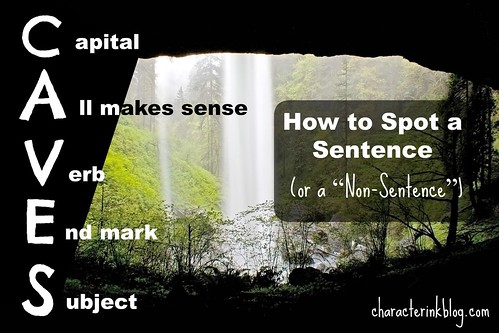It has been said that when a banker or a counterfeit money “agent” learns about counterfeit money, he or she begins by learning what the real thing looks like.
I use this same approach to teach about sentences, clauses, and phrases in my language arts and writing books (Character Quality Language Arts and Meaningful Composition): teach the students what a real sentence looks like—and then teach what are not real sentences.
I teach what a sentence contains using a simple acronym: CAVES
Once a student learns what a real sentence is and can spot real sentences (and “non-sentences”), the possibilities for writing, sentence structure understanding, advanced sentence combining technique use, and more are endless!
Work on CAVES first—then your student will be able to do any and all of the following:
1. Tell the difference between a real sentence and a non sentence
2. Fix comma splices (since it will be obvious that this is a real sentence and that one is too)
3. Match subjects with their verbs in tense and number easily
4. Write with sentence openers clearly and in sophisticated manners
5. Combine sentences for all kinds of conciseness techniques and fancy shmancy writing
CAVES—it is what a sentence contains!
If you write a sentence and you are unsure of whether it is a “real” sentence, use CAVES.
When a sentence is not a “real” sentence, the culprit is usually the A one—All makes sense. And that “A” one will take us into sentences vs. phrases and clauses…on another day. Happy writing!





Trackbacks/Pingbacks